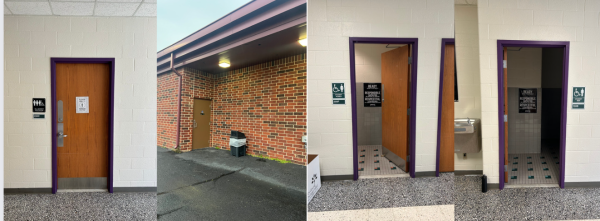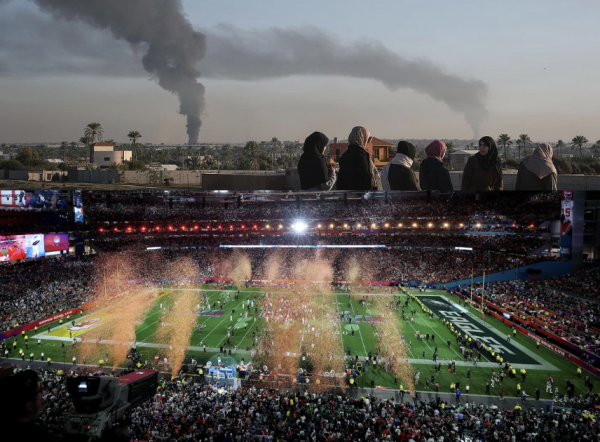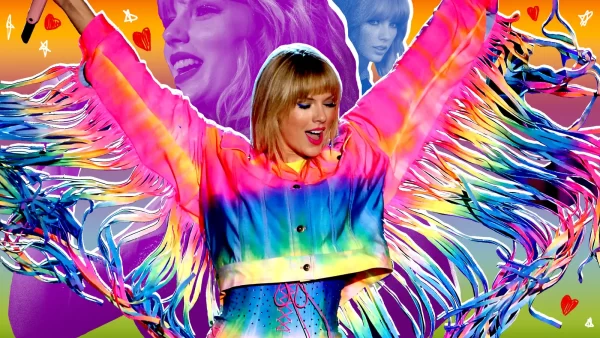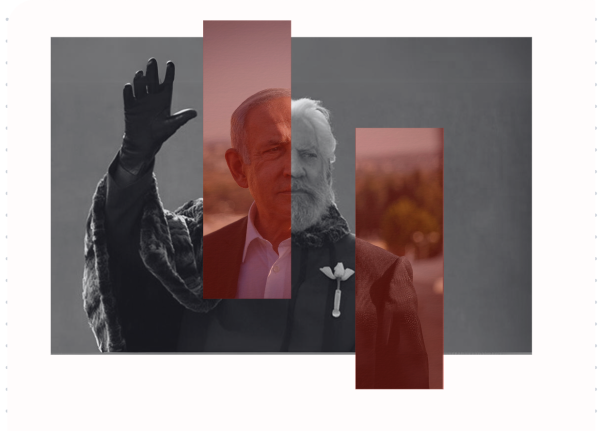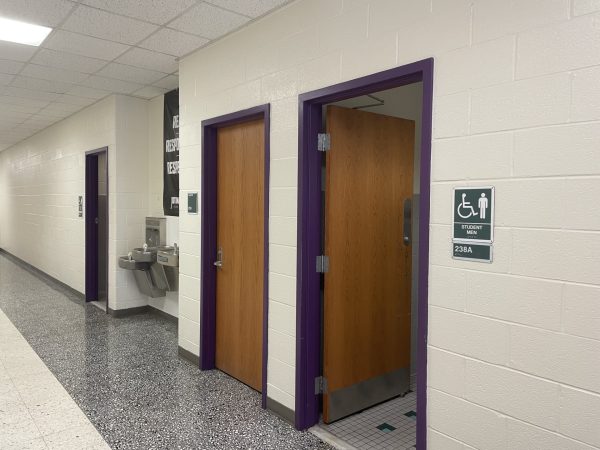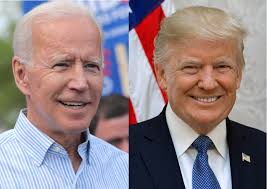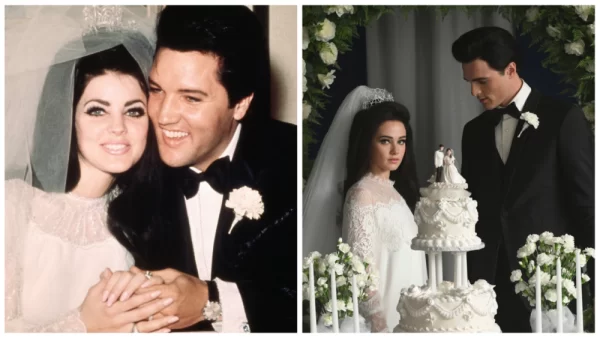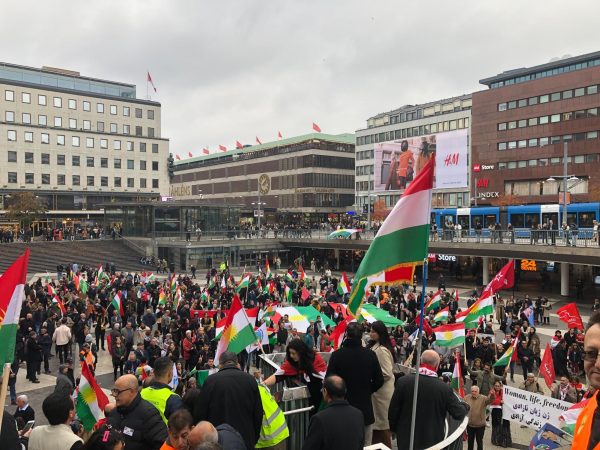The curious case of baseball in Florida
Dissecting why the sport has never caught on
Over spring break, my mom and I took a driving trip that led us through different places in Georgia and Florida. One of the main focuses of the trip was seeing a couple of professional baseball games. I saw three different games, one in Atlanta and two in Florida. While seeing the Marlins slowly implode at the hands of the Nationals at Marlins Park in Miami, I counted 25 completely empty sections of seating around the stadium. I also counted five restaurants that weren’t open, probably because of the lack of attendance.
A couple days after the Marlins game, I crossed an item off my bucket list when I saw the Rays play the Yankees at Tropicana Field. The stadium was actually fairly full, minus the multiple sections of the stadium closest to the roof that had been tarped over. While seeing these ballparks for the first time and taking in the experience, I couldn’t help but wonder why baseball isn’t popular in Florida.
Professional baseball’s lack of following in the Sunshine State absolutely baffled me at first, for many reasons. The weather in Florida is nearly impeccable baseball weather, especially during the winter. Additionally, about half of the major league teams flock to Florida for spring training before every season. Florida even boasts some talented college baseball programs, such as Florida State and the University of Florida.
Keep in mind that Miami has an extremely Cuban demographic. In fact, Cuba has been unwillingly supplying baseball players to the States for a hundred years. That raises the question of why Cuban-Americans aren’t flocking to games in Florida. Continuing with the Miami theme, I think the Marlins are actually a likable team. They have a lot of young talent that will let them compete with the powerhouses of the National League East in a few years. Players such as Giancarlo Stanton, Jose Fernandez, and Marcell Ozuna are just a few players that are thrilling to watch. Their starting lineup, when I saw them, had four players batting over .300; that sounds like a team who is bound for the playoffs, a team with a strong following. The Marlins even boast an-almost-brand-new stadium that is oriented around the fan experience as much as it is about the game itself; the Marlins front office is proud to own the only bobblehead museum in the nation. Aside from new accolades, the Marlins also have history on their side. They were met with success very quickly after being established. The Fish entered the league in 1993 and were World Series champions by 1997, then champions again in 2003. That almost instant success should have established a strong following, a system evident in the Nationals’ run to the postseason in 2012.
The Tampa Bay Rays, Florida’s other professional baseball team, have an even more perplexing unpopularity. The Rays did not have the same quick success as the Marlins, as they were abysmal for years until their first playoff appearance in 2008, 10 years after their establishment. Ten years is still fairly quick for a new team to be in the playoffs, as it took the Philadelphia Athletics 30 years to make the playoffs. Unlike the Marlins, the Rays’ success has been more recent, and this success is further apparent as of late, as they won the American League Wild Card last season.
Like the Marlins, the Rays also have some talent on their team. They’ve established their base on players such as David Price, Evan Longoria, and Chris Archer. The Rays are a young team that is looking to prove itself yet again in the near future, and their future has the potential to be bright. The fans have something to look forward to, so why isn’t the Trop (Tropicana Field) being filled more?
The case of baseball in Florida slowly unraveled as I talked to my dad about the sport. He is a native Floridian and he is familiar with most of the state, including their sports. He was even given the moniker “The Out Machine” as a youth baseball player, because he wasn’t the most talented batter on the sandlots of South Florida. He told me how Miami is a bit of an odd city. He described it as a fast-paced city with not very much to see, and not an extreme amount of culture either. A lack of culture can be related to a lack of tradition, and sports followings in cities are all about tradition. So a relative lack of culture can be attributed to a lack of following for both Floridian baseball teams, but particularly for the Marlins.
My dad described the Tampa/St. Petersburg area as a community of primarily retired senior citizens, which isn’t exactly the best age group to build a fanbase around. Walking around St. Petersburg, I saw primarily older people. I also noticed that they were all dressed differently. I know that clothes aren’t necessarily specific to one region, but I anticipated more Hawaiian shirts and sandals. I was then reminded that these people have most likely retired from a colder state up north. As they move down to Florida, their sports allegiances stay with them. This is part of the reason that Major League Baseball Spring Training in Florida is so popular, retired folks and their grandchildren flock to minor league parks to watch their teams from back “home” play some preseason ball. Spring training is more popular than the regular season games for the Rays and Marlins because there are multiple stadiums throughout on the Atlantic and Gulf of Mexico coasts. I don’t think that we Virginians as a whole realize how big, flat, and spread out Florida is. Tropicana Field and Marlins Park aren’t easily accessible, unlike stadiums such as Nationals Park that is located in the center of the tri-state area. The locations of both stadiums just aren’t convenient. This is evident in almost every other Floridian professional sports team. Teams like the Dolphins, Buccaneers, and Magic seldom come close to selling out.
The case of professional baseball in Florida is an oddity that is unrivaled in other major sports hubs. Both franchises will continue to exist in Tampa and Miami, but I think the case for the Rays is slightly worse. They just don’t play in a town that is yearning for a professional team. Its age demographic as well as population just can’t support a team. That being said, I’m optimistic about both teams. The Rays have been in or near the playoffs in arguably the most difficult division in baseball for the past few years. I’m also, reluctantly as a Nationals fan, optimistic about the Marlins. They have some promising rookies and a new ballpark to attract attention until the winning comes. If these franchises find a way to avoid turning things around soon, I can’t see an ending to this story where both teams do not relocate and professional baseball in Florida is gone.


